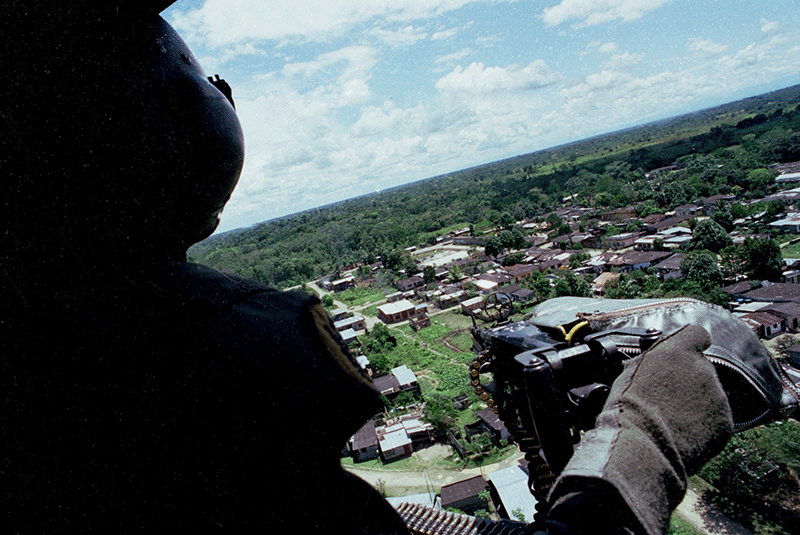Colombia spent $114 billion to contain violence in 2013, according to a new report from the Australia-based Institute for Economics and Peace. This total includes fighting an ongoing conflict with the Revolutionary Armed Forces of Colombia (FARC), combating drug cartels, and dealing with the day-to-day violence that all countries face. Despite this jaw-dropping sum, the organization ranked Colombia 146th out of the 162 countries analyzed its Global Peace Index, leaving it as the least-peaceful nation in Latin America and lagging behind the likes of Egypt, Rwanda, and Venezuela.
The half-century-long war with FARC is a big reason, but this low ranking is also driven by high perceptions of criminality, access to weapons, violent crime, political terror, displaced citizens, and—most of all—homicides. While the conflict attracts most of the press, murder and violent crime are what cost the nation most economically. “Interpersonal violence is actually a bigger problem than we tend to see reported in the media,” said Michelle Breslauer of the institute.
This may be one of the reasons the nation appears to have halted the progress it was making to reduce homicides earlier this century. In 2002, Colombia was the murder capital of the world with 69 homicides per 100,000 people, per World Bank statistics. A committed effort to security helped cut that rate in half, to 33 per 100,000, just a few years later in 2008. But the latest figures, of 31 per 100,000 in 2012, still give Colombia the 10th-worst homicide rate in the world and show that further advancement is hard to come by—even in a nation that spends 18% of its GDP on what the institute calls “violence containment.”
This is money that could otherwise be used to improve schools, roads, or health care. The report says that secondary education attainment is now lower than it was in 2010 and this may be one of the areas that have suffered as resources went elsewhere. “When we look from the economic side at how much it’s costing countries to spend on violence containment, and when we look at that lost opportunity cost of peace, it really provides a powerful economic argument for using some of those funds in a different capacity,” said Breslauer.
Some efforts are leading to real progress, however. “There are cities within Colombia, like Medellín, that have really reduced their levels of violence,” she said. “They’ve focused on things like inclusion in the city and creating public spaces.”
These are the types of initiatives that can make a big difference. Much of the Medellín’s violence in the 1990s and early 2000s, for example, occurred in the Santo Domingo neighbourhood. The people there are poor and have difficulty getting to and from their homes high up on the mountainside. They were effectively cut off from much of the city in practical terms, some spending four hours per day walking to and from menial jobs. Then the city constructed a revolutionary transit system of gondolas in 2004 that completely changed the lives of those who lived in the hills, saving them money on transportation and making it much easier for them to participate in the city’s economy and day-to-day life. This is far from the only reason Medellín has made such strides, but it has become an example to city planners worldwide of how governments can curb violence by investing in areas other than security.
But it is isn’t just murder and violent crime that cost so much. The war is very expensive. “While homicides account for the greatest portion of Colombia’s cost of violence, the ongoing internal conflict also contributes greatly,” says the report, while also noting that “resources which would normally have been devoted to development have been used to fight the civil war.”
It says the peace negotiation in Cuba “offers hope” for improvement, as does the impressive GDP growth shown in recent years. So far, however, Colombia’s rapidly expanding economy has not brought the corresponding decreases in crime rates “which would normally be seen with such increases in wealth,” according to the report.
To this end, Breslauer urged nations to spend wisely rather than just presuming an influx of money and an end to conflict will magically eradicate violence. “The general idea that your level of GDP should match your level of peacefulness doesn’t always hold true,” said Breslauer. “For instance, in the U.S…despite the economy, we have fairly high levels of homicide.”

